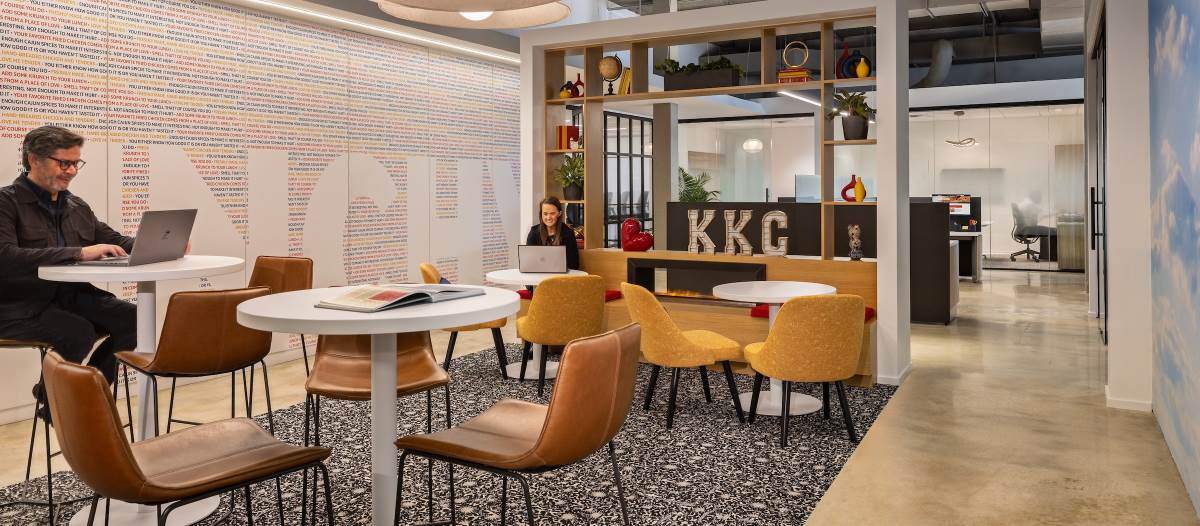Destressed
The benefits of a calming room

A calming room can be described as a designated space intentionally designed to help people take a break, defuse anger and re-center. It is a supportive, therapeutic environment that can assist in self-calming efforts by offering a space to relax and self-regulate. It can be used for prevention to deescalate emotions or anxiety before one gets too overwhelmed. It is designed to calm the senses so the users can experience calming visual, auditory and tactile stimuli. The spa-like atmosphere of calming rooms can help users find peace in turbulent times.
Benefits
 The benefits of a calm space are immense. This type of space can provide a sense of well-being by allowing users a place to slow down and breathe. It can improve mental health by giving time to refocus and/or decompress. It can provide quiet time amid the noise. In an office setting, a calming room could be used if employees have wellness issues, such as migraines or anxiety, which will require a quiet place. In an educational setting, a calming room could be used as a place for students to deescalate in the event of an altercation or a place for faculty to take a break from the fast pace of the school day. In a health care setting, a calming room could be used as a place for providers to refocus after a high-stress medical situation or for patient families to meditate during a difficult time. In any type of environment, the ability to step away to a safe space is paramount for the users.
The benefits of a calm space are immense. This type of space can provide a sense of well-being by allowing users a place to slow down and breathe. It can improve mental health by giving time to refocus and/or decompress. It can provide quiet time amid the noise. In an office setting, a calming room could be used if employees have wellness issues, such as migraines or anxiety, which will require a quiet place. In an educational setting, a calming room could be used as a place for students to deescalate in the event of an altercation or a place for faculty to take a break from the fast pace of the school day. In a health care setting, a calming room could be used as a place for providers to refocus after a high-stress medical situation or for patient families to meditate during a difficult time. In any type of environment, the ability to step away to a safe space is paramount for the users.
Elements
The elements of a calming room include colors, materials, sound and nature. Colors are typically muted, soothing tones that invoke a sense of peace. Materials include soft, natural textures and patterns. Sounds consist of both acoustical dampening to control outside noises and calming music to bring in a soothing background. Nature is best when it involves actual views to the exterior, but when that is not possible, bringing in nature through imagery or indoor plants is also beneficial.
-
Colors:
Color is one of the most subjective elements of design. Some people prefer warm tones like yellows and oranges, some prefer cool tones like blues and greens, while others prefer a more neutral palette of creams, grays and beiges. Regardless of personal preference, the use of warm, cool or neutral colors will work well within a calm space if those colors are muted in hue and intensity. The use of color is critical in creating a calming room that will serve its purpose. Adversely, the use of bold or sterile colors can create the opposite effect. Bold colors, such as bright reds and vibrant purples, can be energizing and stimulating. Sterile colors, such as the heavy use of grays, can be depressing and lead to feelings of sadness. However, the correct balance of color — in the correct hue and intensity — can help to create a calming room that invokes a sense of peace, which is the goal of the space.
-
Materials:
Materials are important in the creation of a calm space. Soft textures such as boucle fabrics can provide a tactile element that can be soothing. Touch can have a calming effect on the body and mind and can help reduce stress and anxiety. Providing materials that enhance the tactile ability can aid in that. Natural textures and patterns can be beneficial as well. Natural patterns, such as woodgrains, lend warmth to any space and can help balance other, more muted elements. Natural textures such as wood, bamboo or wicker provide depth to a space. All these materials can enhance a calming room by giving it softness and depth.
-
Sounds:
Sound is perhaps the most critical element in any type of space, and especially in a calming room. According to an article published by the Harvard T.H. Chan School of Public Health, “noise is the second largest environmental cause of health problems after air pollution, according to the World Health Organization. It’s been linked with issues ranging from sleep disturbance to poor concentration to risk of metabolic and cardiovascular disease and dementia.” When creating a calming room within a building, the presence of noise can hinder the purpose of the room. To counter that, the use of acoustical dampening can be used to control outside sounds. Elements such as sound masking and the use of acoustical building materials, such as sound attenuation blankets within the walls, high NRC acoustical ceiling tile, carpet flooring, acoustical wall panels and even acoustical art, can aid in the reduction of noise within a space. It is important to consider the various noise ratings of building materials to ensure that they are suitable for the space, because some will prevent sound from travelling outside of the room, while others will prevent sound from coming into the room or reverberation within the room. Additionally, it is important to use calming music within a space to bring in soothing sounds. Calming music can provide sounds that enhance a sense of well-being and focus. It can also aid in breathing exercises or meditation exercises, which are proven to improve stress levels and health.
-
Nature:
It has been said that nature is the best healer. Humans spend most time inside buildings, with minimal access to the outside. As evidenced by the WELL Building Standard, access to nature is a critical element in well-being. The standard notes this access “requires the integration of nature and natural elements into the interior and exterior of the project, as well as the provision of nature views and nearby nature, such as green and blue spaces.” It is best to provide spaces with actual views out to the exterior, but that is not always possible. Another way of achieving this intention is by providing imagery of nature or the presence of natural materials within the indoor space. Examples could include the use of artwork the incorporates landscapes or nature scenes, the use of live plants, or even simply the use of natural colors such as green or blue. An example of nature artwork can be found in the work of Dr. Henry Domke, a practicing family physician who enjoyed his hobby of photography. When he read the emerging research about how patients exposed to nature, or even images of nature, healed more quickly, had less stress and required less pain medication, he turned that hobby into a business. Today, his nature photography is featured in hospitals across the United States. The incorporation of nature into built spaces is also known as biophilic design, which has been found to support cognitive function, physical health and psychological well-being. Incorporating biophilic elements into a space is a proven way to bring nature in, and to improve the health and well-being of the people who use the spaces that apply it.
Example of a room conversion
When tasked with converting a storage room into a calming room at a high school, the design firm utilized cool colors, soft textures, acoustical dampening and natural imagery to invoke a sense of peace within the space and to provide a respite for students and faculty.
In a world full of literal and figurative noise, a calming room can be a respite, a refuge and a place to recharge, even if only for a few minutes in a person’s day. Those few minutes could make a world of difference in that person’s life. That space could help convert feelings of overstimulation, anger or sadness to calm, peace and joy. A calming room promotes well-being, mental health, and quiet time…three things that people who are overscheduled, overstimulated and overwhelmed need more than anything. It can give them the time and space to take a deep breath when it is needed most.

Read more on Occupancy & Human Factors and Workplace
Explore All FMJ Topics








